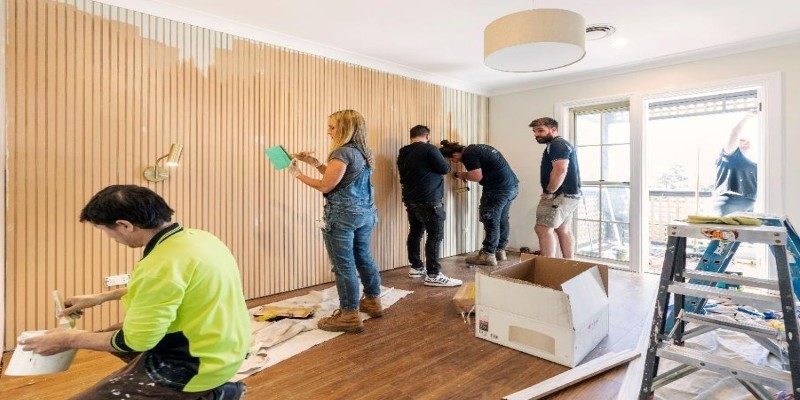Renovating a home can feel like a daunting task, especially when you're working with a limited budget. Many homeowners dream of transforming their space but often worry about the costs. The good news is that with some strategic planning and creativity, it's possible to renovate effectively without breaking the bank. This article will discuss practical tips and strategies to help you achieve a beautiful home makeover, even on a tight budget.
Prioritize The Essentials
When working with a limited budget, the first step is to prioritize what matters most. Think about what parts of your home need the most attention. Is the kitchen outdated? Do the floors need refinishing? Are the walls in need of a fresh coat of paint? Identify the areas that will significantly impact your home's look and feel. Focusing on the essentials will allow you to direct your budget to the most critical tasks and avoid spending on unnecessary upgrades.
For example, instead of gutting an entire kitchen, you can paint the cabinets, upgrade the hardware, and replace the countertops with more affordable materials like laminate or butcher block. Similarly, repainting the walls or reupholstering old furniture can provide a fresh, new look without requiring a massive financial investment.
Do It Yourself (DIY)
One of the most effective ways to save money during a renovation is to take on some of the work yourself. Many renovation projects, like painting, installing new light fixtures, or building simple furniture, can be tackled with basic DIY skills. By doing the work yourself, you can save a significant amount on labour costs, often a large portion of the overall budget.

If you're new to DIY projects, start small. Choose tasks that are manageable and well within your skill level. You can find many instructional videos, tutorials, and guides online to help you complete the work successfully. Remember, taking the time to learn new skills and put in the effort can result in a much more cost-effective renovation.
However, it's important to recognize when a job is beyond your abilities. For example, it's best to call a professional to ensure safety and compliance with building codes if you're unsure about handling electrical or plumbing work. Trying to save money by doing complex work incorrectly could cost more in the long run.
Shop Smart For Materials
Materials often account for the bulk of a renovation's cost. Shopping smart is essential if you want to stick to a tight budget. One way to save money on materials is to look for discounted or surplus items. Many home improvement stores have clearance sections where you can find high-quality materials at a fraction of the regular price.

You can also consider buying secondhand materials from thrift stores, salvage yards, or online marketplaces. Items like doors, windows, and light fixtures can often be found at a much lower price than buying new. Ensure that your secondhand materials are in good condition and will work for your project.
Another way to save money is by choosing less expensive materials that look great. For instance, instead of choosing hardwood floors, you could opt for vinyl or laminate flooring, which can mimic the look of wood at a fraction of the price. Similarly, consider using quartz or affordable options like ceramic tiles instead of granite countertops.
Use What You Already Have
Renovations don't always involve buying new things. Look around your home to see if any materials, furniture, or fixtures can be repurposed or reused. For example, you could repaint an old dresser instead of buying a new one or change the handles on your cabinets to give them a fresh look without replacing the entire set.

If you have any leftover paint or materials from previous projects, see if you can incorporate them into your renovation. A fresh coat of paint on your front door or a new coat on an old piece of furniture can help revitalize your home at no extra cost.
You can also get creative with the items you already own. A vintage rug, old artwork, or family heirloom can add character to your home without requiring any significant spending. Repurposing and reimagining items you already have is an easy way to stay within your budget while creating a stylish and personalized space.
Tackle One Room At A Time
If you're renovating multiple rooms in your home, it's important to pace yourself. Tackling too many rooms at once can quickly drain your budget. Instead, focus on one room at a time. By narrowing your focus, you can allocate resources more efficiently and ensure each room gets the attention it deserves.

When planning your renovation, consider which room will offer the most value for your money. Kitchens and bathrooms have the highest return on investment, so they are good places to start if you're hoping to increase the value of your home. However, if you want to refresh your living space, other rooms, like the living room or bedroom, can often be updated with minor, more affordable changes.
Take Advantage Of Financing Options
If your renovation needs exceed your budget, but you are determined to move forward, consider financing options. Many home improvement stores offer payment plans or financing with low or no interest. Personal loans or credit cards can also help spread the cost of your renovation over time.

Before committing to any financing option, understand the terms and interest rates. Calculate whether the monthly payments are affordable within your budget, and consider using financing only for essential upgrades that will add value to your home.
However, be cautious about taking on too much debt, especially for cosmetic changes that may not significantly increase your home's value. It's best only to use financing for projects that will provide long-term benefits.
Conclusion
With the right approach, renovating on a tight budget is possible. You can create a fresh and inviting home without spending a fortune by prioritizing essential upgrades, doing some work yourself, shopping smart, and repurposing materials. Whether you want to make minor improvements or take on a larger project, these tips can help you stay within your budget while achieving the desired results. The key is to plan carefully, get creative, and focus on making the most of what you have.


